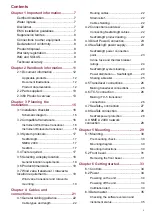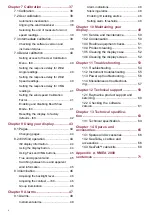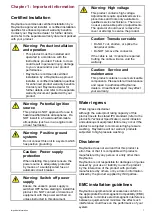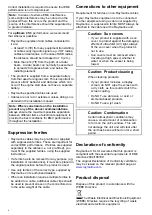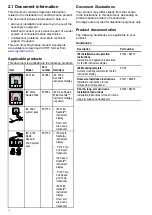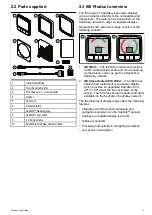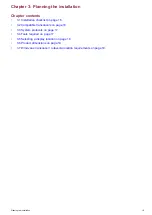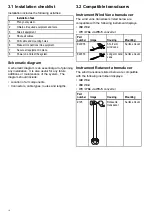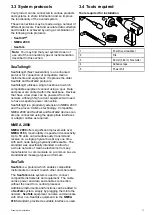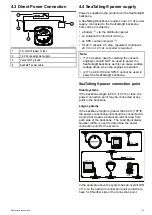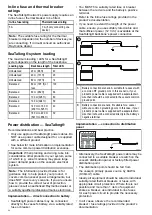
3.3 System protocols
Your product can be connected to various products
and systems to share information and so improve
the functionality of the overall system.
These connections may be made using a number of
different protocols. Fast and accurate data collection
and transfer is achieved by using a combination of
the following data protocols:
•
SeaTalk
ng®
•
NMEA 2000
•
SeaTalk
Note:
You may find that your system does not
use all of the connection types or instrumentation
described in this section.
SeaTalkng®
SeaTalkng® (Next Generation) is an enhanced
protocol for connection of compatible marine
instruments and equipment. It replaces the older
SeaTalk and SeaTalk2 protocols.
SeaTalkng® utilizes a single backbone to which
compatible equipment connect using a spur. Data
and power are carried within the backbone. Devices
that have a low draw can be powered from the
network, although high current equipment will need
to have a separate power connection.
SeaTalkng® is a proprietary extension to NMEA 2000
and the proven CAN bus technology. Compatible
NMEA 2000 and SeaTalk and SeaTalk2 devices can
also be connected using the appropriate interfaces
or adaptor cables as required.
NMEA 2000
NMEA 2000
offers significant improvements over
NMEA 0183
, most notably in speed and connectivity.
Up to 50 units can simultaneously transmit and
receive on a single physical bus at any one time,
with each node being physically addressable. The
standard was specifically intended to allow for
a whole network of marine electronics from any
manufacturer to communicate on a common bus via
standardized message types and formats.
SeaTalk
SeaTalk
is a protocol which enables compatible
instruments to connect to each other and share data.
The
SeaTalk
cable system is used to connect
compatible instruments and equipment. The cable
carries power and data and enables connection
without the need for a central processor.
Additional instruments and functions can be added to
a
SeaTalk
system, simply by plugging them into the
network.
SeaTalk
equipment can also communicate
with other non-SeaTalk equipment via the
NMEA
0183
standard, provided a suitable interface is used.
3.4 Tools required
Tools required for installation
1
Pozi-drive screwdriver
2
File
3
92 mm (3.62 in) hole cutter
4
Adhesive tape
5
Power drill
17



